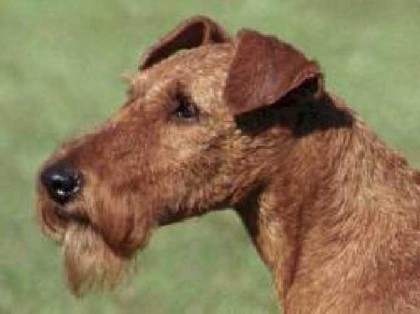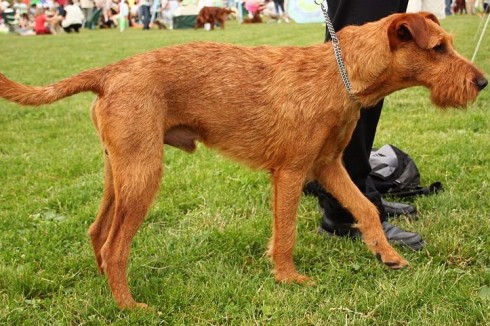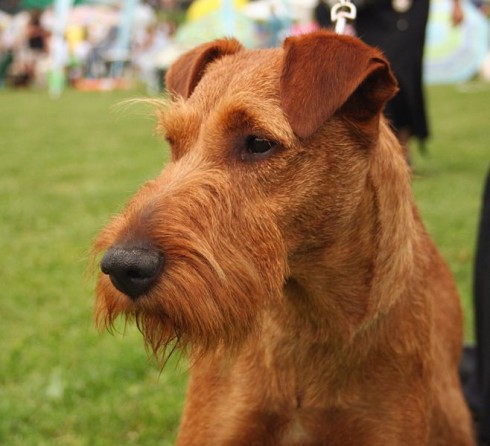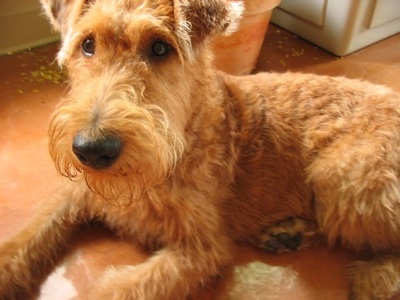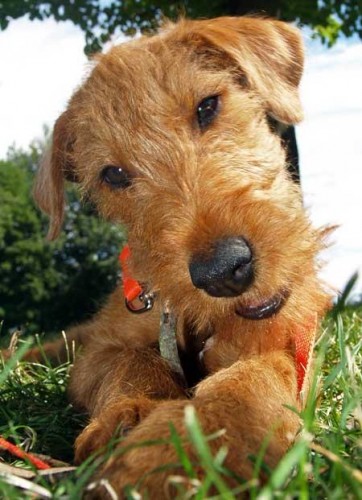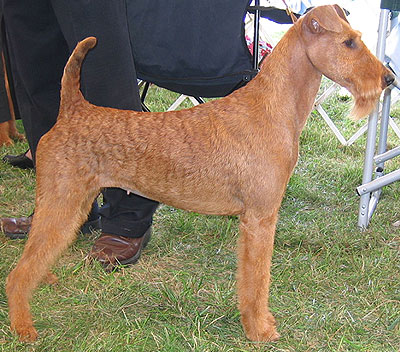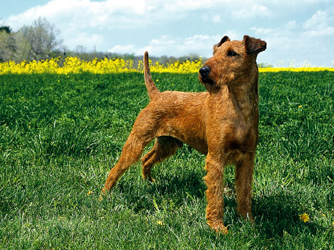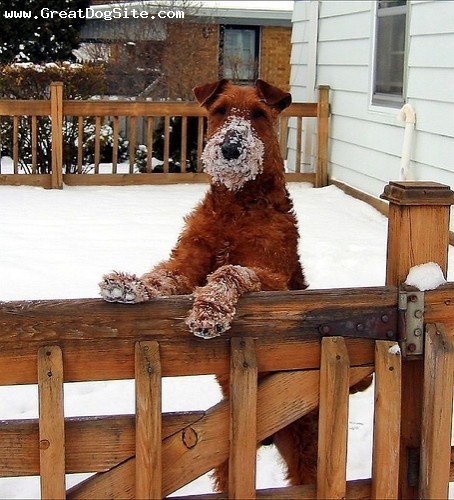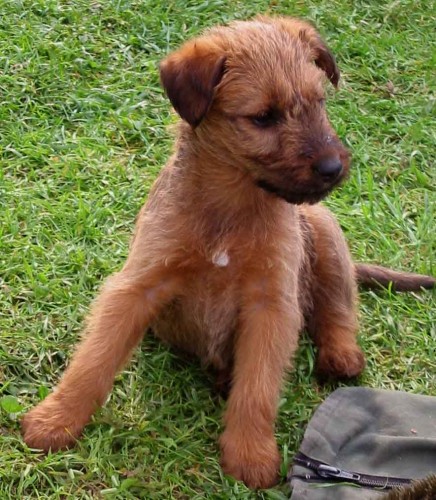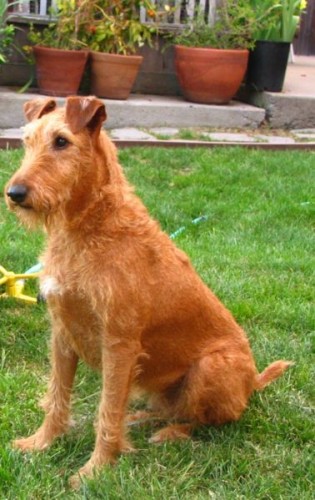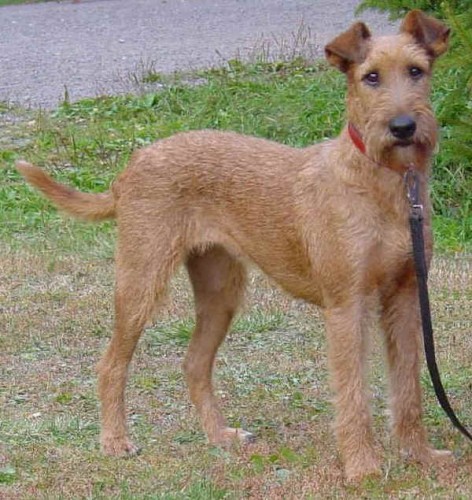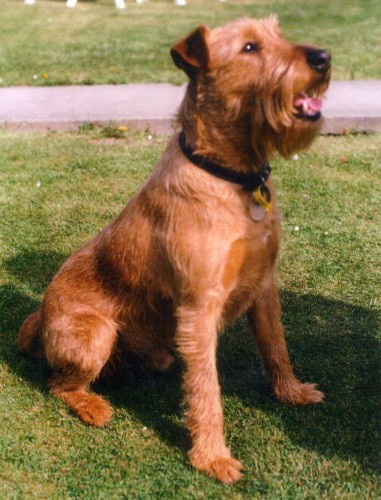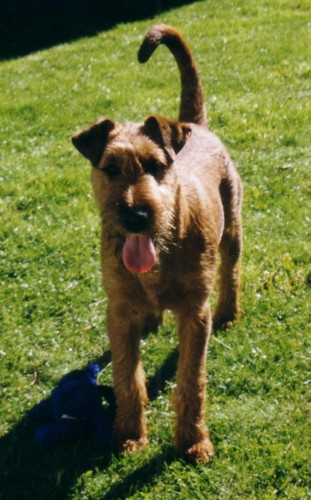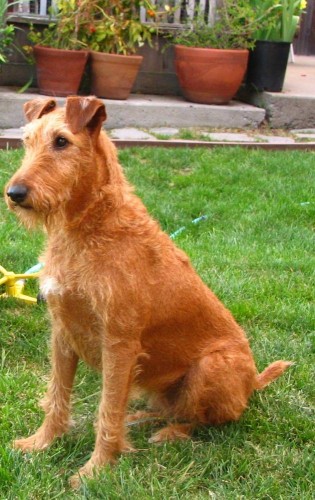Main Index
In Store
Our Web Store
Miniature Schnauzer Picture Gallery
Latest Dog Blogs
- What Are The Basic Commands To Train A Dog?
- PaySafe As The Most Popular Type Of Deposit
- Everything You Need To Know About Pet Sales
- Dogs Contribute To Our Physical And Mental Well Being
- How To Choose Where To Bet On Greyhounds In 2022
- Volunteer With Animals - How To Help Dogs Around The World
- Basic Understanding Of The House Edge
- Why You Should Get A Dog
- Top 20 Popular Dog Names Around The World
- Constipation in Dogs and How to Find Solutions
Irish Terrier
Irish Terrier Clubs/Associations
The Full Irish Terrier Description
The Irish Terrier is a loyal and friendly dog. This dog can't be beaten as an overall pal. He'll hardily adapt to any situation, which proves his deep loyalty to his owner. Not only will he be an enthusiastic playmate for children, he'll guard them and the home with fierce determination and pluck.
Did you know?
The Irish Terrier is one of the oldest of the terrier breeds.
First record of the Irish Terrier being shown as a recognised breed dates back to 1875 in Glasgow, Scotland.
So you want to own a Irish Terrier?
The Irish Terrier is a daredevil. He is an affectionate, good tempered dog, but is known for running headfirst, blind to any consequences.
The Irish Terrier is an absolutely loyal companion to his family.
The Irish Terrier is the interested playmate and protector of children eager to join in their fun and frolic.
The Irish Terrier should be groomed on a regular basis.
Indicative Breed Standard
General Appearance
An active, lively and wiry appearance; plenty of substance but free of clumsiness. Neither cloddy nor cobby but showing a graceful racy outline.
Characteristics
There is a heedless, reckless pluck about the Irish Terrier which is characteristic, and, coupled with the headlong dash, blind to all consequences, with which he rushes at his adversary, has earned for the breed the proud epithet of ‘the Daredevils’. When ‘off duty’ they are characterised by a quiet caress-inviting appearance, and when one sees them endearingly, timidly pushing their heads into their master’s hands, it is difficult to realise that on occasions, at the ‘set on’, they can prove that they have the courage of a lion, and will fight to the last breath in their bodies. They develop an extraordinary devotion for and have been known to track their masters almost incredible distances.
Temperament
Good-tempered, notably with humans, it being admitted, however, that he is perhaps a little too ready to resent interference on the part of other dogs.
Head and Skull
Head long; skull flat, and rather narrow between ears, narrowing towards eye; free from wrinkles; stop hardly visible except in profile. Jaw strong and muscular, but not too full in cheek, and of good length. Foreface not dished or falling away quickly between eyes, delicately chiselled. Lips well fitting and externally almost black in colour. Nose black.
Eyes
Dark, small, not prominent. A light or yellow eye highly undesirable.
Ears
Small and V-shaped, of moderate thickness, set well on head, and dropping forward closely to cheek. Top of folded ear well above level of skull. Ear must be free of fringe, and hair thereon shorter and darker in colour than body.
Mouth
Teeth even, strong and free from discoloration. Jaws strong, with perfect, regular scissor bite, i.e. upper teeth closely overlapping lower teeth and set square to the jaws.
Neck
Fair length and gradually widening towards shoulders, well carried and free of throatiness. Generally a slight fringe at each side of neck, running nearly to corner of ear.
Forequarters
Shoulders fine, long and well laid back. Legs moderately long, well set from shoulders, perfectly straight, with plenty of bone and muscle; elbows working freely clear of sides; pasterns short and straight, hardly noticeable, the forelegs moved straightforward when travelling.
Body
Chest deep and muscular, neither full nor wide. Body moderately long; back strong and straight, with no appearance of slackness behind shoulders; loin muscular and slightly arched; ribs fairly sprung, rather deep than round, and well ribbed back.
Hindquarters
Strong and muscular, thighs powerful, hocks well let down, stifles moderately bent. Hindlegs move straight forward when travelling, hocks not turned outwards. Hair on legs dense and crisp.
Feet
Strong, tolerably round, moderately small, toes arched, neither turned out nor in; black toe nails most desirable. Pads sound and free from cracks or horny excrescences.
Tail
Customarily docked.
Docked: Customarily docked to about three quarters. Free of fringe or feather, but well covered with rough hair. Set on pretty high, carried gaily but not over back or curled.
Undocked: Set on pretty high, carried gaily but not over back or curled. Free of fringe or feather but well covered with rough hair. In overall balance with the rest of the dog. Carriage is such that the tail is not liable to damage during working.
Gait/Movement
Fore- and hindlegs carried straight forward and parallel. Elbows move perpendicular to body, working free of sides, stifles neither turning in nor out.
Coat
Harsh and wiry, having broken appearance, free of softness or silkiness, not so long as to hide the outline of body particularly in hindquarters, straight and flat, no shagginess and free of lock or curl. At base of these stiff hairs is growth of finer and softer hair, usually termed the undercoat. Hair on foreface crisp and only sufficiently long to impart appearance of additional strength. Hair on legs dense and crisp.
Colour
‘Whole-coloured’, most preferable colours being red, red/wheaten, or yellow/red. Small amount of white on chest acceptable, white on feet highly undesirable. Black shading highly undesirable.
About Our Article Directory
- Article
- 27 November 2010
- 2 comments
Canis lupus familiaris
- Breed Article
- 29 May 2010
- No comments
Quick Search
Donate
Latest Dog Pods
- Tips on How to Stop Your Dog from Biting
- Beware - Not All Advertised Dog Rescues Really Are! How Can You Know The Truth?
- Helpful Tips For Dog Obedience Problems
- How to Keep Dogs From Eating Poop
- Dog Grooming Tips - A General Overview of the Very Basics of Dog Grooming
- Recognising Different Types of Dog Obedience Problems
- 5 Important Tips On Feeding A Puppy


